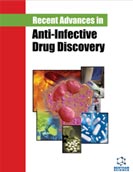Abstract
Lymphatic filariasis is an infection caused by parasites that poses a significant health, social, and economic burden, affecting a vast population that exceeds 120 million individuals globally. The Etiology of the infection is attributed to three nematode parasites, namely Wuchereria bancrofti, B. timori, and Brugia malayi, as well as which are phylogenetically related. These parasites are transmitted to humans via mosquitoes belonging to the Anopheles, Aedes genera, and Culex. As per the estimation provided by the WHO, the current number of individuals infected with filariasis stands at approximately 120 million across 81 countries. Furthermore, it is estimated that around 1.34 billion individuals reside in regions that are endemic to filariasis, thereby putting them at risk of contracting the disease. Different synthetic drugs such as Ivermectin, Doxycycline, Albendazole, and Suramin are used in the treatment. Some natural plants are Azadirachta indica, Tinospora cordifolia, Zingiber officinal, as well as, some marine sources are also included for better treatment. We also touch briefly on a few additional filarial diseases. Although there are only a few medications available to treat filariasis, their frequent usage may result in drug resistance. Furthermore, there is no effective vaccination for the treatment of filariasis. Due to these restrictions, it has been crucial to create new anti-filarial medications, which motivates researchers to find novel pharmaceuticals with anti-filarial action. In this article, we examine the latest achievements in the anti-filarial area, including the many forms of filariasis and their historical contexts, elimination programmes, various therapeutic classes (both synthetic and natural), investigated product-derived targets as well as clinical investigations.
Graphical Abstract
[http://dx.doi.org/10.1371/journal.pntd.0001242] [PMID: 21811644]
[http://dx.doi.org/10.1016/S0020-7519(02)00062-0] [PMID: 12076624]
[http://dx.doi.org/10.1093/inthealth/ihaa095] [PMID: 33349885]
[http://dx.doi.org/10.1016/S0169-4758(00)01643-4] [PMID: 10827432]
[http://dx.doi.org/10.1046/j.1365-3156.2002.00935.x] [PMID: 12225508]
[http://dx.doi.org/10.2147/RRTM.S125204] [PMID: 30050352]
[PMID: 17664709]
[http://dx.doi.org/10.1016/S0065-308X(05)60004-8] [PMID: 16230105]
[http://dx.doi.org/10.1186/1756-3305-7-46]
[http://dx.doi.org/10.1179/136485906X118521] [PMID: 16989688]
[http://dx.doi.org/10.1016/j.heliyon.2023.e13255] [PMID: 36846682]
[http://dx.doi.org/10.3390/tropicalmed3020058] [PMID: 30274454]
[http://dx.doi.org/10.1371/journal.pntd.0002308] [PMID: 23875043]
[http://dx.doi.org/10.1016/bs.apar.2015.12.002] [PMID: 27015952]
[http://dx.doi.org/10.5694/j.1326-5377.2011.tb03154.x] [PMID: 21692728]
[http://dx.doi.org/10.1371/journal.pntd.0001755] [PMID: 23383349]
[PMID: 20604131]
[http://dx.doi.org/10.1186/1752-1947-4-196] [PMID: 20584337]
[http://dx.doi.org/10.1371/journal.pntd.0000755] [PMID: 20614017]
[http://dx.doi.org/10.1371/journal.pntd.0000741] [PMID: 20614015]
[PMID: 9714902]
[http://dx.doi.org/10.2165/00128071-200809030-00001] [PMID: 18429642]
[PMID: 15303792]
[PMID: 5363963]
[PMID: 3058397]
[PMID: 12588081]
[http://dx.doi.org/10.1016/j.jaad.2006.12.004] [PMID: 17504714]
[http://dx.doi.org/10.1016/S0169-4758(97)01130-7] [PMID: 15275155]
[http://dx.doi.org/10.4269/ajtmh.1994.50.753] [PMID: 8024070]
[http://dx.doi.org/10.1080/00034983.2000.11813515] [PMID: 10723526]
[http://dx.doi.org/10.1093/infdis/170.4.927] [PMID: 7523538]
[http://dx.doi.org/10.1046/j.1365-3156.1996.d01-79.x] [PMID: 8765448]
[http://dx.doi.org/10.1016/S0035-9203(97)90405-3] [PMID: 9093637]
[http://dx.doi.org/10.1016/0035-9203(95)90561-8] [PMID: 7660449]
[http://dx.doi.org/10.1080/00034983.1999.11813433] [PMID: 10656038]
[http://dx.doi.org/10.1080/00034983.1998.11813316] [PMID: 9797832]
[http://dx.doi.org/10.1016/S0169-4758(99)01486-6] [PMID: 10461168]
[http://dx.doi.org/10.1017/S0031182000007290] [PMID: 11386684]
[http://dx.doi.org/10.1080/00034983.2000.11813583] [PMID: 11064762]
[http://dx.doi.org/10.1016/S0140-6736(05)66591-9] [PMID: 15964448]
[http://dx.doi.org/10.1371/journal.ppat.0020092] [PMID: 17044733]
[http://dx.doi.org/10.1111/j.1365-3156.2007.01949.x] [PMID: 18076549]
[http://dx.doi.org/10.1086/501351] [PMID: 16575724]
[http://dx.doi.org/10.1097/QCO.0b013e328315cde7] [PMID: 18978537]
[PMID: 3297557]
[http://dx.doi.org/10.1007/s00436-001-0588-x] [PMID: 12049454]
[http://dx.doi.org/10.1099/0022-1317-68-8-2183] [PMID: 2440983]
[http://dx.doi.org/10.1007/s002280050454] [PMID: 9681668]
[http://dx.doi.org/10.1039/C7RA01857F]
[PMID: 7376252]
[http://dx.doi.org/10.1016/0166-6851(81)90028-1] [PMID: 7322187]
[http://dx.doi.org/10.2165/00003495-198020020-00005] [PMID: 6995094]
[http://dx.doi.org/10.1016/0035-9203(81)90424-7] [PMID: 7036437]
[http://dx.doi.org/10.1111/j.1476-5381.1970.tb10601.x] [PMID: 5445688]
[http://dx.doi.org/10.1002/ps.2780160612]
[http://dx.doi.org/10.1016/j.exppara.2012.01.009] [PMID: 22306280]
[http://dx.doi.org/10.1007/s00436-009-1555-1] [PMID: 19626340]
[http://dx.doi.org/10.1007/s00436-004-1159-8] [PMID: 15243801]
[http://dx.doi.org/10.1016/S1995-7645(14)60147-4] [PMID: 25441981]
[http://dx.doi.org/10.1007/s00044-010-9419-x]
[PMID: 10235663]
[http://dx.doi.org/10.1016/j.ejmech.2012.01.057] [PMID: 22348826]
[http://dx.doi.org/10.7243/2054-9881-1-1]
[PMID: 1213780]
[http://dx.doi.org/10.1016/S0378-8741(02)00141-1] [PMID: 12169401]
[http://dx.doi.org/10.1016/j.lfs.2004.09.009] [PMID: 15556170]
[http://dx.doi.org/10.1016/S0308-8146(02)00498-3]
[http://dx.doi.org/10.1016/j.jep.2005.12.009] [PMID: 16469462]
[http://dx.doi.org/10.1017/S0022149X00000342] [PMID: 10953224]
[http://dx.doi.org/10.1016/S0031-9422(98)00131-9]
[http://dx.doi.org/10.1002/ddr.10056]
[http://dx.doi.org/10.1080/14786419.2013.879585] [PMID: 24483166]
[http://dx.doi.org/10.1016/j.intimp.2009.02.012] [PMID: 19281872]
[PMID: 8950138]
[http://dx.doi.org/10.4103/0257-7941.107344] [PMID: 23661861]
[http://dx.doi.org/10.1016/j.fitote.2004.10.010] [PMID: 15664463]
[http://dx.doi.org/10.1166/jbn.2009.038] [PMID: 20055111]
[PMID: 23507990]
[http://dx.doi.org/10.1007/s12263-010-0194-6] [PMID: 21484152]
[http://dx.doi.org/10.1186/1475-2875-9-66] [PMID: 20196858]
[http://dx.doi.org/10.4269/ajtmh.2005.73.881] [PMID: 16282298]




























